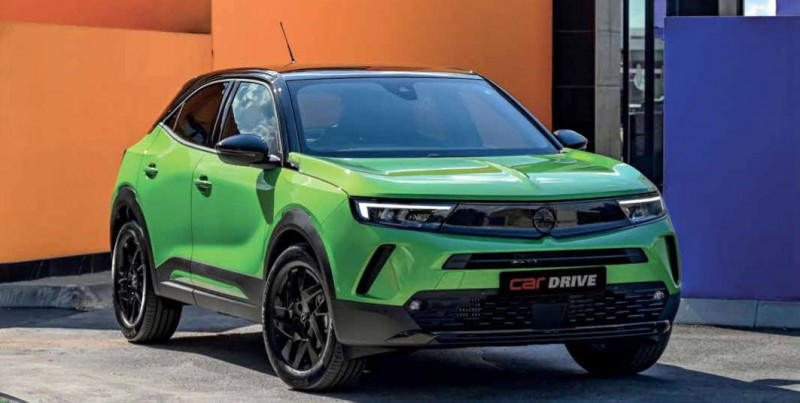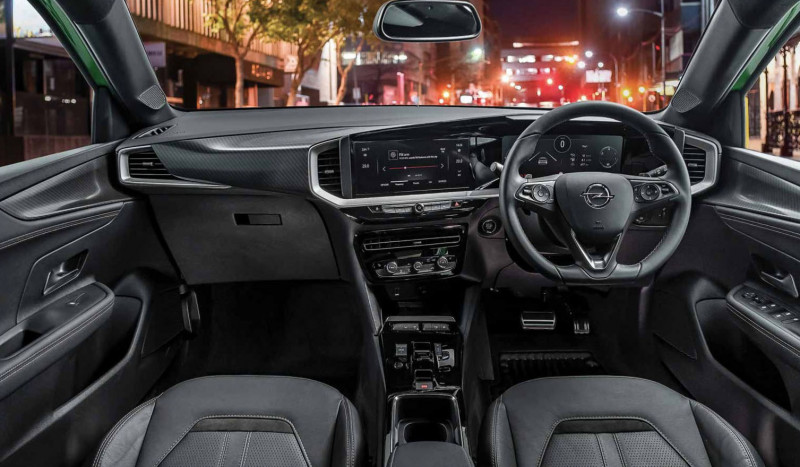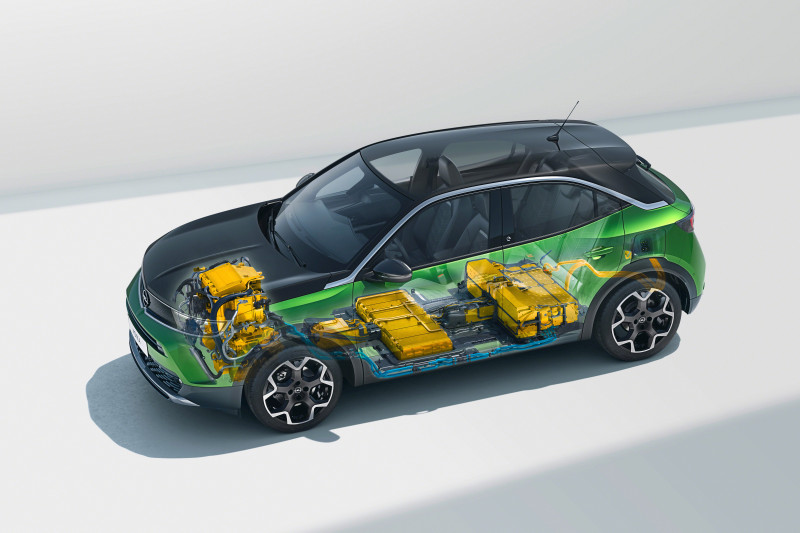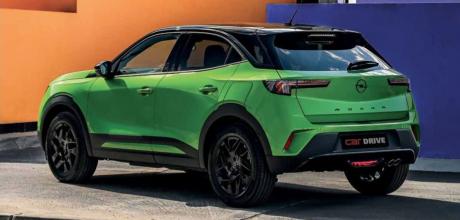2023 Opel Mokka 1.2T GS Line
New Opel Mokka gets a dollop of cream and a sizeable sprinkle of goodness, but does its shared DNA hinder it from rising above other alternatives on the crossover menu?
Platform game
Undoubtedly, the biggest disservice we can do to the new Opel Mokka is to compare it to the old one, which felt tired even when new. That car survived the then- PSA Group’s (today, the 16 brand-strong Stellantis, established in January 2021) buyout of Opel in 2019 before being kept on life support for another year. Still, if it failed to reach the high-water mark, that doesn’t mean it lacked purpose – to contribute to the unstoppable rise of the compact crossover, and rewrite history at the cost of the C-segment hatch and sedan. Today, tyre kickers demand elevated seating positions and sumptuous spec lists for the least outlay. As a result, one in four cars sold in South Africa is a hatch on stilts. Enter the second-generation and vastly modernised Opel Mokka. Quick to cash in on its freshly made family ties, the new Mokka utilises Stellantis’ Common Modular Platform and shares its underpinnings with the Citroën C4, Peugeot 208/2008 and Opel Corsa, among others.

Even so, a Corsa stuffed into a pair of Timberlands it is not. Rather, the Mokka is one of the first releases adorned with the company’s new face, dubbed “Vizor design”. If the spelling skills of Opel’s marketing team are open to question, we cannot fault their counterparts in the design deparment. Fresh-faced and futuristic, the new Mokka features crisp, sharp lines far removed from the rounded chubbiness that marred the old model.

Although EV and turbodiesels complete the range in Europe, South African-spec Mokkas are available only with Stellantis’ ubiquitous 1,2-litre three-cylinder turbo-petrol engine, which is good for 96 kW and 230 N.m and is paired with an eight-speed paddleshift automatic transmission. That R469 900 nets you the lower-grade Elegance edition, and another R50 000 unlocks the GS Line. Externally, only chrome finishes on the front and rear bumpers and a different wheel rim design set the two derivatives apart.
Headline standard equipment in the base model comprises 17- inch black alloy rims, heated front seats, LED head- and taillamps, climate control, a self-dimming anti-dazzle rear-view mirror, six airbags and an active safety package consisting of speed sign recognition, lane keep assist,manual cruise control and pedestrian-detecting brake assist.

Beyond these, the GS Line swaps leather for its lesser sibling’s cloth seat trim and receives a massage function for the front occupants, as well as keyless entry, adaptive cruise control, active collision avoidance and full matrix LED headlamps that self-select the optimal setting from an impressive six options. Inside, Opel has gone to great lengths to declutter the Mokka’s cockpit. As has become the norm, driving information is selected via screen instead of mechanical dials; while another display in the centre of the dashboard provides infotainment and – in the GS Line – navigation. The gear selector is a circuit-breaker-style slider instead of a lever and the designers have smartly opted to leave five actual shortcut buttons below the centre screen that fast-track sub-menu selection.
The modest 160 mm ground clearance provides the tell-tale sign of the Mokka’s intended purpose. The 17-inch tyres add to its visual presence but thankfully do not translate to a crashy ride. The suspension – and entire powertrain, for that matter – makes for a pleasant (and quiet at legal speeds) if uninvolving experience behind the wheel. If such things matter, an Audi Q2 offers an equally commanding position, but lists less when challenged dynamically.
Is the new Mokka a good buy or a goodbye? The category for compact crossovers knows no limit, and at this price point, most manufacturers tend to err on the side of high standard specifications or more space as shoppers buy down or simply expect more for their money. Considering the extensive features list, it’s clear which direction Opel has chosen for the Mokka. And that’s no bad thing.
While the commonality of its shared componentry is not unique to the machinations required to survive the piranha pool of today’s automotive enterprise, given Opel’s once-illustrious history, the convenient artifice of its borrowed DNA makes it rather challenging to subjectively identify a standout personality in the new Mokka. Perhaps that’s the point. New – and in the case of the Mokka, tarred urban – paths exist to be found and trails to be blazed, with drivers as the masters of their destiny, where sometimes, divorce from the tentacles of history is a benefit instead of a burden. It’s a brave new world.

01 Interior balances analogue and digital switchgear.
02 Rear leg space is adequate, although sloping roof may hamper taller passengers.
03 The 160 mm ground clearance serves to remind the Mokka prefers the caf. over the coffee plantation.
THE BRAND WITH THE LIGHTNING BOLT BADGE
Founded by Adam Opel in August 1862, Opel is celebrating a special 160th anniversary this year.
THE BEGINNINGS –
FROM SEWING MACHINES TO BICYCLES
After assembling his first sewing machine in Rüsselsheim and manufacturing special sewing machines with unique requirements, Opel’s production got off to a strong start. By 1868, the brand was one of the largest sewing-machine manufacturers in Germany and exported to the whole of Europe. In 1886, the first penny-farthing bicycle was built in Rüsselsheim, making Opel one of the first bicycle manufacturers. Soon the range of models expanded to include tricycles and “Sicherheits-Niederr.der” (a safety bicycle with lower wheels). Opel was quick to adopt technology such as pneumatic tyres, ball bearings and free-wheel hubs for its bicycles.
1899 – AFFORDABLE MOBILITY
Automobile production began in 1899 in Rüsselsheim, starting with the Opel “Patent-Motorwagen System Lutzmann”, and by 1906, the 1 000th vehicle was built. Opel was the first German manufacturer to introduce large-scale production using assembly-line technology. The first car to roll off the line in Germany in 1924 was the 4/12 PS “Laubfrosch”, always painted green. In 1935, the new Olympia model became the first German mass-produced vehicle with a unitary steel body, which ensured improved driving performance and low fuel consumption thanks to its lower weight.
01 Mokka weighs 120 kg less than its predecessor, providing a welcome boost in agility.
02 GS Line’s fullmatrix LED headlights andmassaging seats are standout standard features.
03 New so-called “Vizor Design” grille is reminiscent of latter-day Chevrolet Camaro styling.
04 Eight-speed auto offers a usable torque spread fromthe engine and dual-clutch-like shifts.
TECHNICAL DATA 2023 Opel Mokka 1.2T GS Line
- Price: 23500USD
- Engine: 1,2-litre, 3-cyl, turbo-petrol
- Transmission: 8-speed automatic
- Max Power: 130bhp / 96 kW @ 5500 rpm
- Max Torque: 230 N.m @ 1750 rpm
- 0-62nph / 0-100 km/h: 9,2 seconds*
- Top speed: 200 km/h*
- Fuel consumption: 6,1 L/100 km*
- CO2 emissions: 139 g/km*
- Rivals: Audi Q2, Volkswagen T-Roc, Volkswagen T-Cross, Renault Koleos, Hyundai Kona, Mazda CX-30, Peugeot 2008 *Claimed figures
- striking, modern exterior design, tourquey engine
- overly light steering detracts from dynamics


